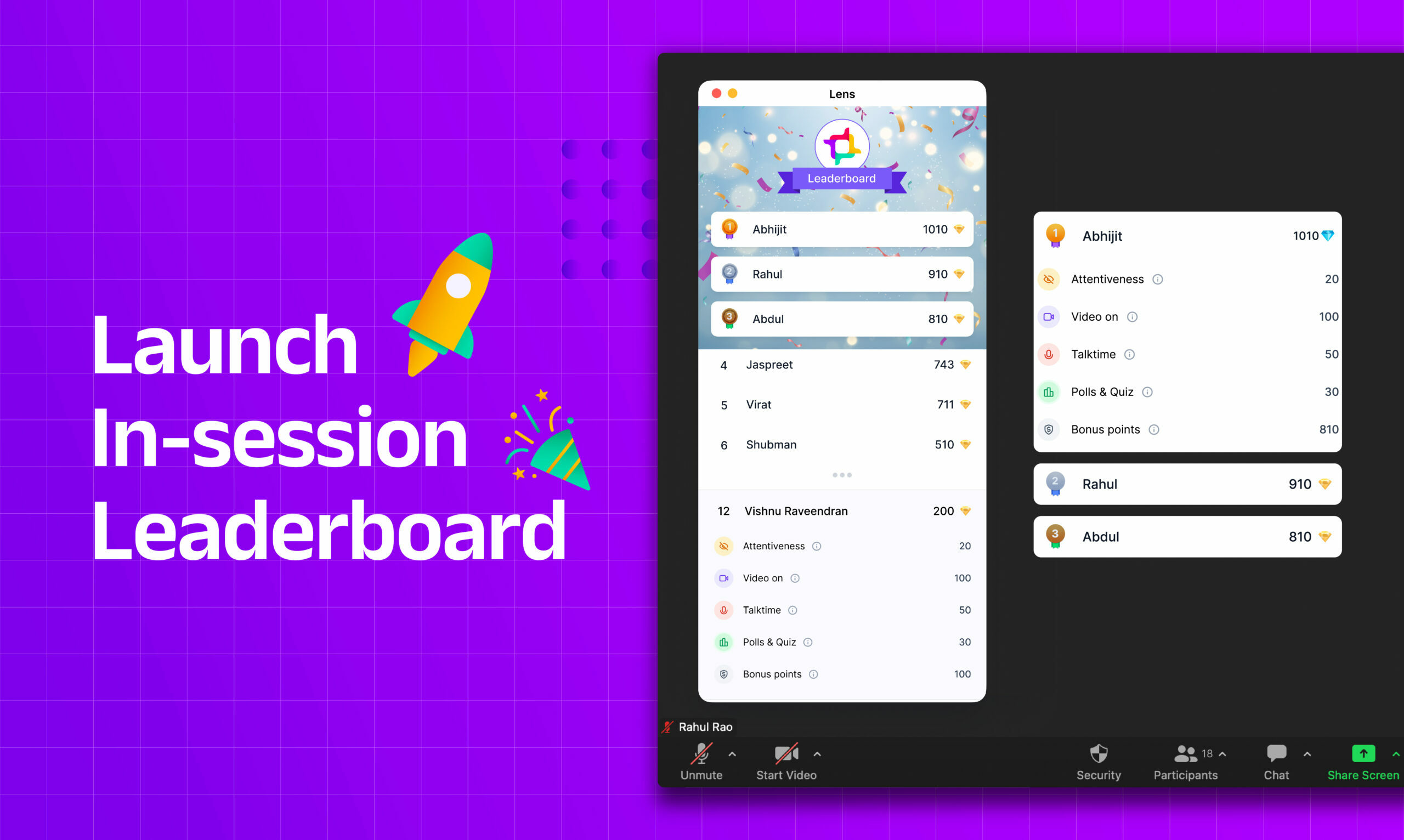Online learning has become increasingly popular in recent years as more and more students seek flexible and convenient learning methods. However, this form of learning is challenging for students and teachers because of the lack of student engagement in online learning.
One of the biggest challenges of online education is keeping students engaged. There are many reasons why students need to be more engaged in online learning. Some may need help staying focused on a computer screen challenging for long periods. Others may need help interacting with their instructors and classmates. Some may need more motivation to learn online.
Whatever the reason, instructors must find ways to boost student engagement in online learning. Many strategies can be used to do this, and the best approach will vary depending on the specific course and the students involved.
This article will discuss five ways to boost student engagement in online learning. These strategies are based on research on effective teaching and learning and on the experiences of instructors who have successfully used them in their online courses.
The five strategies are:
- Set clear expectations and model engagement.
- Use interactive activities and tools.
- Provide regular feedback.
- Create a positive and supportive learning environment.
- Use technology to your advantage.
We will discuss each of these strategies in detail in the following sections. We will also provide examples of how these strategies can be used in online learning.
By using these strategies, instructors can create an online learning environment that is both effective and enjoyable for their students.
1. Set Clear Expectations and Model Engagement

Setting clear expectations means communicating to students what you expect from them regarding participation, attendance, and assignments. Modeling behaviors that you want to see from your students. For example, if you want students to participate in class discussions, you should experience yourself.
When setting expectations, it is essential to be specific and realistic. You should align the expectations with the learning objectives. The learning objective is for students to write a persuasive essay. In that case, students should participate in a weekly discussion forum and submit articles throughout the semester.
It is also essential to be consistent with your expectations. If you expect students to participate in class discussions, you should call on students who have not spoken up yet. You should also provide feedback on student participation, both positive and negative.
It is crucial to model behaviors that you want to see from students. If you want students to be engaged in learning, you should participate in class discussions, ask questions, and provide feedback. It also means being enthusiastic about the material and willing to share your experiences.
By setting clear expectations, modeling engagement, and being consistent with your expectations, you can create a learning environment conducive to student engagement.
2. Use Interactive Activities and Tools.

One of the best ways to keep students engaged in online learning is to use interactive activities and tools. This could include polls, quizzes, breakout rooms, and group projects. Interactive exercises help to keep students engaged and make learning more fun.
There are many different types of interactive activities that you can use in online learning. Some popular options include:
Polls: Polls are a great way to get students’ input and feedback on a topic. You can use polls to gauge students’ understanding of the material, to get their opinions on a question, or to keep them engaged. Zoom’s polls functionality is complicated and requires much planning for successful use.
If you want to maximize engagement during class, we recommend you use a tool like Lens that allows you to launch polls and quizzes as the class happens instantly.
Quizzes: Quizzes are a great way to assess student learning and provide feedback. You can use quizzes to check for understanding, to provide practice problems, or to give students a chance to earn extra credit.
With a tool like Lens, you can also hold live question & answer sessions. This allows your students to upvote the most relevant questions and gives you better moderation over the interaction.
Breakout rooms: Breakout rooms are a great way to get students to collaborate and interact with each other. You can use breakout rooms to have students work on a group project, discuss a particular topic, or get to know each other better.
Group projects: Group projects are a great way to get students to work together and learn from each other. You can use group projects to have students research a topic, create a presentation, or simply work on a problem together.
When using interactive activities, it is crucial to ensure they are relevant to the course’s learning objectives. You should also ensure that the activities are appropriate for the level of the students. Finally, you should make sure that the activities are engaging and fun.
You can create an exciting and enjoyable learning environment for your students using interactive activities and tools.
3. Provide Regular Feedback

Students need to know how they are doing to stay motivated. Regular feedback helps students track their progress and identify areas where they need to improve. Feedback can be given in various ways, including written comments, discussions, and quizzes.
When providing feedback, it is essential to be specific and constructive. You should also ensure timely feedback is relevant to the student’s work. For example, if a student has submitted a paper, you might provide feedback on the paper’s organization, the clarity of the argument, and the use of evidence.
It is also essential to be positive and encouraging. Even if you have negative feedback to give, you should try to frame it positively. For example, you might say, “I see you are having trouble with this concept. Let’s take some time to work through it together.”
Finally, it is crucial to ensure that students understand the feedback you give them. You can do this by providing clear explanations and asking students to clarify questions.
4. Create a Positive and Supportive Learning Environment

Students are more likely to be engaged in learning if they feel comfortable and supported. This means creating a learning environment free from judgment and where students can ask questions and make mistakes. You can create a positive learning environment by being welcoming and approachable and providing students with opportunities to collaborate and support each other.
You can do many things to create a positive and supportive learning environment. Here are a few tips:
- Be welcoming and approachable. Make sure students feel comfortable coming to you with questions or concerns. You can do this by being available during office hours, responding to emails promptly, and by creating a welcoming atmosphere in your classroom.
- Provide opportunities for collaboration. Group projects, peer reviews, and online discussion forums are great ways for students to collaborate. Collaboration can help students to learn from each other and to develop their communication skills.
- Encourage students to ask questions. Make it clear that you want students to ask questions, even if they think they are silly. You can do this by saying things like, “There is no such thing as a stupid question” or “I would rather you ask a question than make a mistake.”
- Celebrate student success. When students do well, make sure to let them know. You can do this by giving positive feedback, celebrating their accomplishments, and by sharing their work with others.
By creating a positive and supportive learning environment, you can help students feel comfortable and supported, leading to increased engagement in learning.
5. Use Technology to Your Advantage

Many up-and-coming technologies help you model the live class experience and boost engagement. One of the core products in this module is Lens.
Lens can be a valuable tool for instructors who want to boost student engagement in online learning. By providing real-time data on student engagement, Lens can help instructors identify areas where students need more support and adjust their teaching methods accordingly. Lens can also allow instructors to create a more engaging and interactive learning environment for their students.

Here are some specific ways that Lens can be used to boost student engagement:
- Identifying students who need more support: Lens can help instructors to identify students who are not engaged in the learning process. This can be done by tracking student talktime, attention, and participation. Once instructors have identified these students, they can provide additional support, such as one-on-one tutoring or small group work.
- Adjusting teaching methods: Lens can also help instructors adjust their teaching methods to increase student engagement. For example, if Lens shows that students are not engaged during lectures, the instructor may need to make the lectures more interactive or provide more opportunities for students to ask questions.
- Creating a more engaging and interactive learning environment: Lens can also help instructors to create a more engaging and interactive learning environment for their students. This can be done using polls, quizzes, and other interactive activities during class. Lens can also create a leaderboard that tracks student participation and engagement. This can help to motivate students to stay engaged in the learning process.
In conclusion, many ways to boost student engagement in online learning exist. By setting clear expectations, using interactive activities and tools, providing regular feedback, creating a positive and supportive learning environment, and using Lens, instructors can create an online learning environment that is both effective and enjoyable for their students.
In addition to the strategies discussed in this article, instructors can do many other things to boost student engagement in online learning. Some other ideas include:
- Personalizing the learning experience: Make sure that the learning experience is tailored to the individual needs of each student. This can be done by providing different difficulty levels for assignments, offering choices in activities, and providing opportunities for students to work at their own pace.
- Making learning relevant: Ensure the learning material is relevant to the students’ lives and interests. This can be done by using real-world examples, providing opportunities for students to apply their learning, and connecting the knowledge to the student’s future goals.
- Making learning fun: Make the learning experience enjoyable for the students. This can be done by using games, puzzles, and other interactive activities and providing opportunities for students to collaborate and work together.
By following these tips, instructors can create an online learning environment that is both effective and enjoyable for their students.




